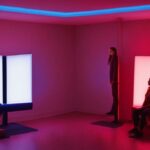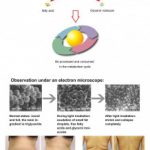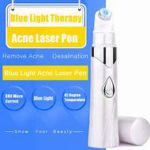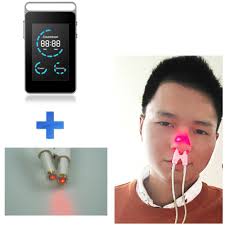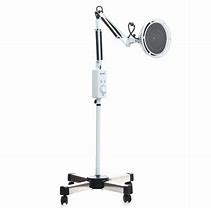Light therapy lamps, also known as phototherapy lamps, are commonly used to treat seasonal affective disorder (SAD) and other mood disorders. While they are effective at mimicking natural sunlight and boosting mood, there is a common misconception that they also provide vitamin D. In this discussion, we will explore the question of whether or not light therapy lamps give you vitamin D.
Contents
Understanding Light Therapy and Vitamin D
Light therapy is a non-invasive treatment that uses specific wavelengths of light to improve mood, sleep, and skin health. It is an effective treatment for seasonal affective disorder (SAD) and other mood disorders. However, one of the most common misconceptions about light therapy is that it can provide vitamin D, which is not true.
Vitamin D is a hormone that is produced in the body when the skin is exposed to sunlight. It is an essential nutrient that helps the body absorb calcium and phosphorus, which are necessary for strong bones and teeth. Although both light therapy and vitamin D are related to exposure to light, they work differently in the body.
The Difference Between Light Therapy and Sunlight
Light therapy lamps emit specific wavelengths of light that are designed to improve mood, sleep, and skin health. These wavelengths are different from the wavelengths of sunlight that produce vitamin D. Sunlight is the primary source of vitamin D, and it is essential for the body to produce this hormone.
The Importance of Vitamin D
Vitamin D is an essential nutrient that helps the body absorb calcium and phosphorus, which are necessary for strong bones and teeth. It also plays a role in the immune system, and low levels of vitamin D have been linked to an increased risk of certain cancers, autoimmune diseases, and other health conditions.
How to Get Vitamin D
The best way to get vitamin D is through exposure to sunlight. The body can produce vitamin D when the skin is exposed to sunlight. However, the amount of vitamin D that the body produces depends on several factors, including the time of day, season, latitude, and skin color. In general, people with darker skin need more sun exposure to produce the same amount of vitamin D as people with lighter skin.
Other Sources of Vitamin D
In addition to sunlight, there are other sources of vitamin D, including food and supplements. Fatty fish, such as salmon and tuna, are good sources of vitamin D. Fortified foods, such as milk and breakfast cereals, also contain vitamin D. Vitamin D supplements are also available over the counter and can be an effective way to increase vitamin D levels.
Can Light Therapy Lamps Provide Vitamin D?
Unfortunately, light therapy lamps cannot provide vitamin D. The wavelengths of light used in light therapy lamps are different from the wavelengths of sunlight that produce vitamin D. While light therapy can be an effective treatment for mood disorders and skin health, it is not a substitute for vitamin D.
Some light therapy lamps are marketed as “full-spectrum” lamps, which means that they emit a wider range of wavelengths that are similar to natural sunlight. However, these lamps do not emit enough UVB radiation to produce vitamin D in the skin.
The Bottom Line
In conclusion, light therapy lamps do not provide vitamin D. Vitamin D is produced in the body when the skin is exposed to sunlight. Although light therapy is an effective treatment for mood disorders and skin health, it is not a substitute for vitamin D. It is essential to get enough vitamin D through sunlight, food, or supplements to maintain good health. If you are concerned about your vitamin D levels, talk to your healthcare provider. They can recommend a blood test to check your vitamin D levels and recommend appropriate treatment if necessary.
FAQs for the topic: do light therapy lamps give you vitamin d
What is light therapy and how does it work?
Light therapy, also known as phototherapy, is a treatment that uses a lightbox or light therapy lamp to expose you to bright light that mimics natural outdoor light. This treatment is used to help regulate your circadian rhythms, improve sleep, alleviate symptoms of seasonal affective disorder (SAD), and improve overall mood. The light therapy lamp produces a light that is similar in spectrum to the sun’s natural light.
Can a light therapy lamp provide me with vitamin D?
No, a light therapy lamp cannot provide you with vitamin D. Vitamin D is produced when your skin is exposed to ultraviolet B (UVB) rays from the sun. However, the light produced by light therapy lamps does not emit enough UVB rays to stimulate vitamin D production.
Will using a light therapy lamp provide me with any health benefits?
Yes, light therapy lamps can provide you with various health benefits. The bright light produced by the lamp helps stimulate the brain’s production of serotonin, a hormone that regulates mood and circadian rhythms. This can improve mood, sleep and overall well-being. Light therapy has also been found to alleviate symptoms of SAD, such as depression and anxiety.
How often should I use my light therapy lamp?
The frequency of light therapy lamp use can vary depending on the individual’s needs and condition. However, it is generally recommended to use the lamp daily for at least 20-30 minutes. It is also important to use the lamp consistently and at the same time each day to maintain a regular circadian rhythm.
Are there any risks associated with using a light therapy lamp?
While light therapy lamps are generally safe to use, there are some risks associated with their use. Individuals with certain skin conditions or eye conditions, such as glaucoma or cataracts, should avoid using the lamp. In rare cases, light therapy can cause side effects such as headaches, nausea, and eyestrain. It is important to talk to your doctor before beginning light therapy to determine if it is safe for you.

.jpg)
